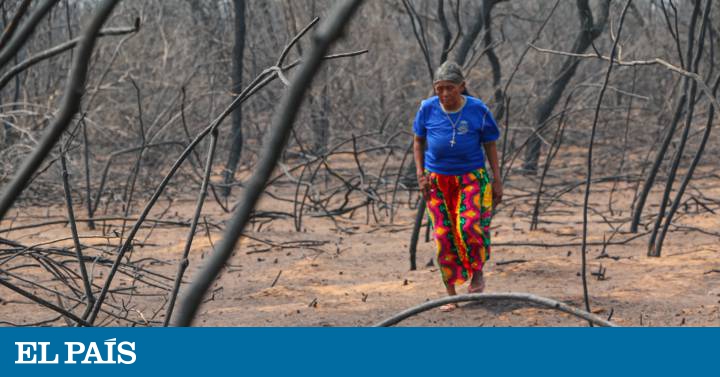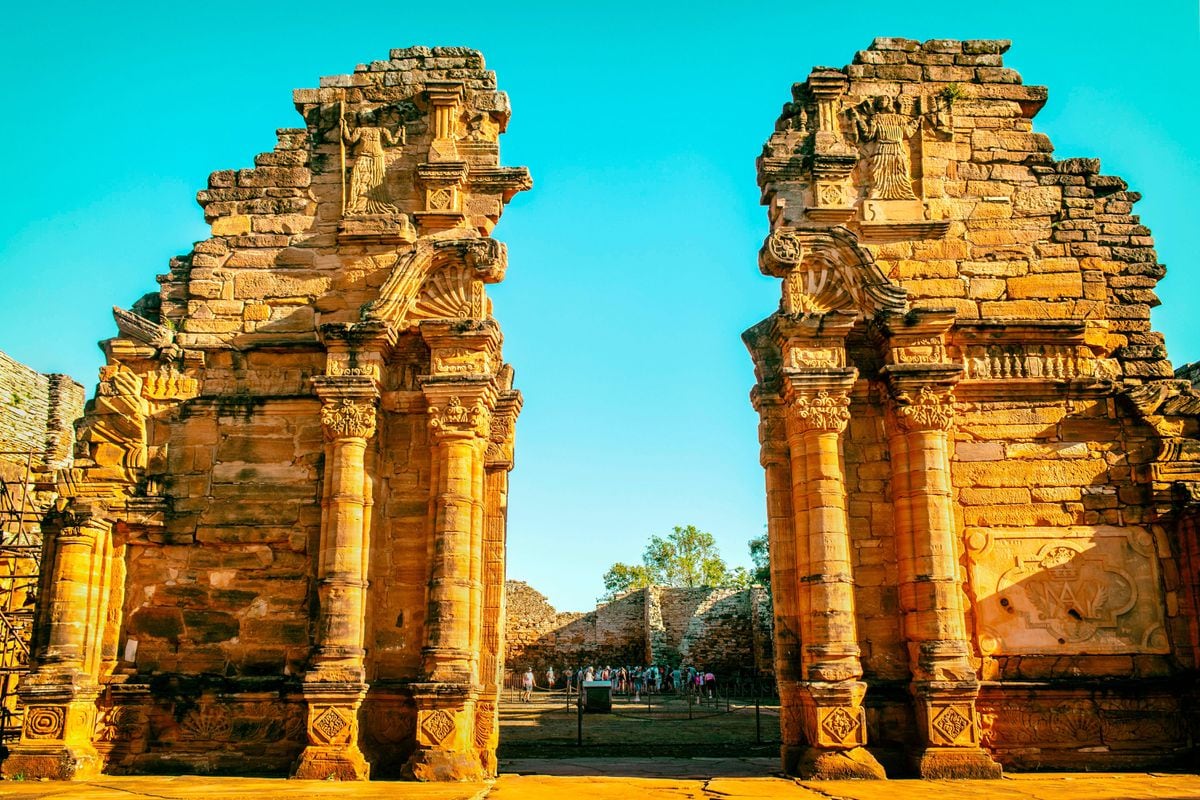“Someone came to burn down the house of the isolated.
The forest is a house that protects, that gives life, that gives food, gives water, ”says Aquino Picanerai, an Ayoreo indigenous and leader of the Campo Loro community in northern Paraguay.
The Ayoreo, who have been pleading with governments for years to officially recognize their ancestral lands, live in the Paraguayan and Bolivian Gran Chaco region, and a part of their numerous subgroups remain in a situation of voluntary isolation until today.
In Latin America there are records of 185 indigenous peoples in such a situation (PIAs), 66 of them confirmed, according to Land is Life.
This organization warns of the great threat that fires pose to the survival of the PIAs, in the recently released Trinational Report: Fires and Deforestation in Territories with Registries of Isolated Indigenous Peoples in Bolivia, Brazil and Paraguay.
MORE INFORMATION
In danger the wetlands of the Paraná River Delta
The Pantanal fire increases pressure on environmental management in Brazil
Purges and environment
The destruction of the territories where they live can lead them to a shortage of food and other basic resources, and to situations of forced contact with other populations or with fire fighting teams.
This can also trigger the transmission of diseases for which they do not have developed immunity, including covid-19.
And microscopic particles suspended in smoke can get into the lungs.
"This causes an inflammatory process, a systemic effect, a headache, pain in the body, a respiratory infection," explains epidemiologist Sandra Hacon, from the Oswaldo Cruz Foundation (Fiocruz) in Brazil, in an investigation recently published by the Institute. Socio-environmental (ISA).
The study shows that there was already a 25% increase in hospital admissions of indigenous people with respiratory problems in August 2019 as a result of the high number of fires in the Brazilian Amazon municipalities.
These health aggravating factors could be fatal to isolated peoples.
“Our Ayoreo brothers in voluntary isolation do not have a fixed place to live, they have to move in the forests in order to survive.
If they leave, they will also end up like us, who are suffering a lot, ”says Picanerai, who denounces the lack of help from the Paraguayan government due to the shortage of water, food and work his community currently lives in due to the long period of drought that began January and to which was added the crisis caused by the pandemic and the devastation caused by the fires of 2019. According to Ayoreo elders, those burned areas in the Paraguayan Chaco will take between 60 and 70 years to regenerate and they estimate that their brothers in a situation of isolation could take decades to return to the vicinity of the affected lands where they previously lived.
Agricultural expansion, the main trigger
In 2019, Land is Life recorded the highest rate of illegal fires in areas with the presence of indigenous peoples in isolation, a total of 36,034 outbreaks.
The balance of uncontrolled fires in the Amazon, Cerrado, Chiquitanía and Gran Chaco in 2019 was especially dramatic between August and September, two of the driest months in the southern cone of Latin America.
This is the time of year when the greatest number of intentional fires are caused to clear land for agricultural purposes, and many criminally affect indigenous lands or protected natural areas where PIAs usually live.
Currently in Brazil there are more than 160,000 assets in 84 protected areas;
in Bolivia they affect 41 natural reserved areas, and in Paraguay 12, according to satellite data from the Institute for Space Research (INPE) as of September 30.
Aerial view of a fire in the Brazilian Amazon.
Emilio Chong (Courtesy of Land is life).
So far this year, the total number of fire outbreaks in Brazil has increased 11% in relation to the same period of 2019, in Paraguay 63% and in Bolivia they have decreased 40%, according to INPE.
One of the regions currently most threatened is the Pantanal of Brazil, considered the largest wetland in the world and recognized as a World Natural Heritage by UNESCO, where fire has destroyed 23% of the total extension of the biome during two months of continuous fires, according to the data of September 27 from the Laboratory of Applications of Environmental Satellites (LASA) of the Federal University of Rio de Janeiro.
The burned area corresponds to 3.4 million hectares, which is equivalent to more than half the extension of a country like Switzerland that has 4.1 million.
This is the highest record recorded in this humid biome, an extremely critical situation for urban and rural populations, as well as for indigenous inhabitants and for animals, which has led the state governments of the region to decree a state of emergency .
In the Pantanal fires have multiplied by 201% compared to last year and 13% in the Amazon biome.
While there are traditional agricultural practices of small-scale vegetation burning, larger-scale fires are the result of criminal actions for land grabbing in both the Amazon and the Brazilian Cerrado, Pantanal and Gran Chaco.
“The common denominator in the origin of the increase in forest fires is human action, driven by situations such as expansive practices of agribusiness and extractive industries.
This, coupled with the lack of effective regulatory frameworks for the protection of isolated indigenous peoples, makes their situation increasingly precarious, ”the trinational report states.
The constant flight of uncontacted indigenous peoples
Burning tree in the Bolivian Amazon.
Esteban Barrera (Courtesy of Land is life).
Groups in voluntary isolation are peoples or segments of indigenous peoples who do not maintain regular contact with the majority population and who also tend to avoid all types of contact with people outside their group, as defined by the United Nations Human Rights Council.
For them, the organization adds, isolation has not been a voluntary option but a survival strategy.
"They live in constant migration as a way of defense, this is due to the traumatic contacts they had previously and that led them to isolate themselves," explains Antenor Vaz, a researcher specialized in indigenous peoples in isolation and lead author of the report on fires and PIAs for Land is Life.
These populations depend entirely on the knowledge of the environment they have traditionally inhabited but are currently exposed to "a situation of permanent flight and despair," according to the report that attributes the responsibilities to the current economic model.
Among the main pressures suffered by the PIAs are the construction of roads and hydroelectric plants, illegal extraction of wood or minerals, drug traffickers or guerrillas who hide in forests and jungles, direct destruction of the territories where they live due to deforestation and fires, as well as the memory of past epidemics.
"If today world society is feeling what voluntary isolation means for fear of catching the coronavirus, most PIAs have lived in such a situation for centuries because of the constant fear of dying from any external disease or being shot by a trafficker or a logger invading their territories, ”says Vaz, focusing on the psychological pressure to which they are subjected.
According to him, some groups may even choose, in threatening situations, to avoid even pregnancies since the crying of babies could alert the invaders.
Weakness of the institutions that protect indigenous people
These peoples have the right to remain isolated as stated in the Declaration of the Rights of Indigenous Peoples of the United Nations, the Organization of American States (OAS) and Convention 169 of the International Labor Organization (ILO).
Likewise, the States are responsible for implementing public policies that avoid forced contact, guarantee their voluntary isolation and defend their fundamental rights, according to the specific recommendations of these organizations.
However, one of the main causes of their vulnerability is the "weakness of the state institutions in charge of their protection," according to the Land is Life report.
In Paraguay, where they live on islands surrounded by large agricultural estates, there is no specific legal framework in the Constitution for their official recognition.
Bolivia has Article 31 of the Constitution, which aims to protect the PIAs, but is generally not put into practice.
"This is only theory, in reality, the extractivist policies of both the government of Evo Morales and the transitory government of Jeanine Añez, are contrary to that constitutional mandate," declares Ruth Alopaz, indigenous leader and member of the National Coordinator of Peasant Native Indigenous Territories and Protected Areas (CONTIOCAP) of the Bolivian Amazon.
“Their laws favor transnational companies (…) they have put all indigenous peoples in Bolivia at risk and, in a more serious and ethnocidal way, peoples in voluntary isolation,” Alopaz adds.
Although Brazil has a constitutional framework that recognizes their rights, as well as specific institutions and public policies for their protection that were an example for the region, these are currently threatened by the current government of Jair Bolsonaro.
In February, Bolsonaro appointed Ricardo Lopes Dias, anthropologist, missionary and theologian, who participated for a decade in missions of evangelization in the Brazilian Amazon as general coordinator of the Isolated and Recent Contact Indian sector of the National Indian Foundation (FUNAI). promoted by New Tribes Mission.
This American organization, which was recently renamed Ethnos360, aims to reach even the most remote communities and has a history of forced contacts with peoples in voluntary isolation throughout Latin America, including the Ayoreo.
The omission of government responsibility both in the protection of the PIAs and in the control of fires can be fatal for indigenous people in isolation.
"There is enough evidence and material already prepared for the States to take steps, if they do not do so they will be responsible for the partial or total death of these peoples," says Vaz, who considers that international economic pressure is the only alternative for the The governments of Brazil, Bolivia and Paraguay take concrete measures to avoid what he describes as a “threat of genocide”.
You can follow PLANETA FUTURO on Twitter and Facebook and Instagram, and subscribe to our
newsletter
here
.









